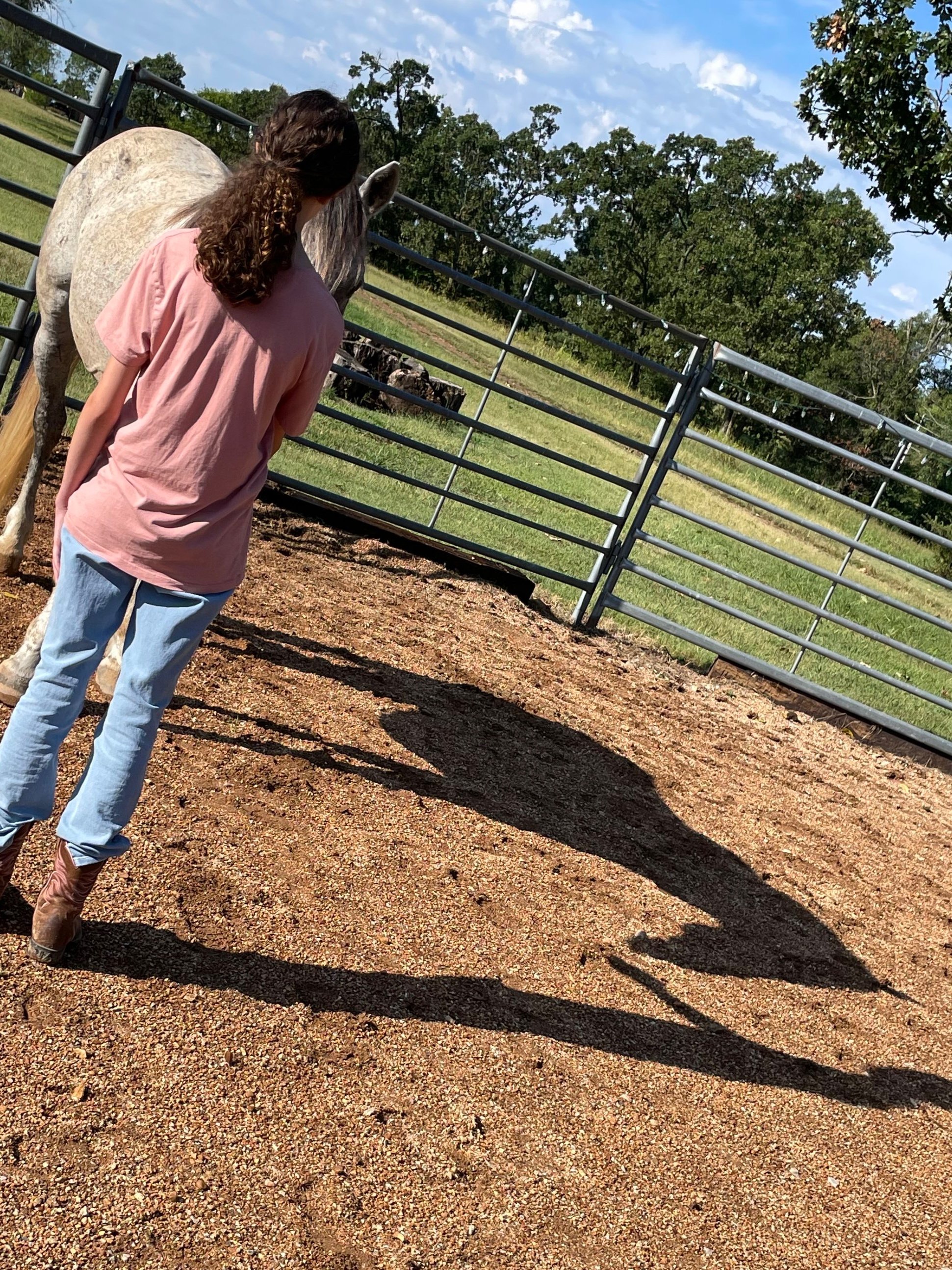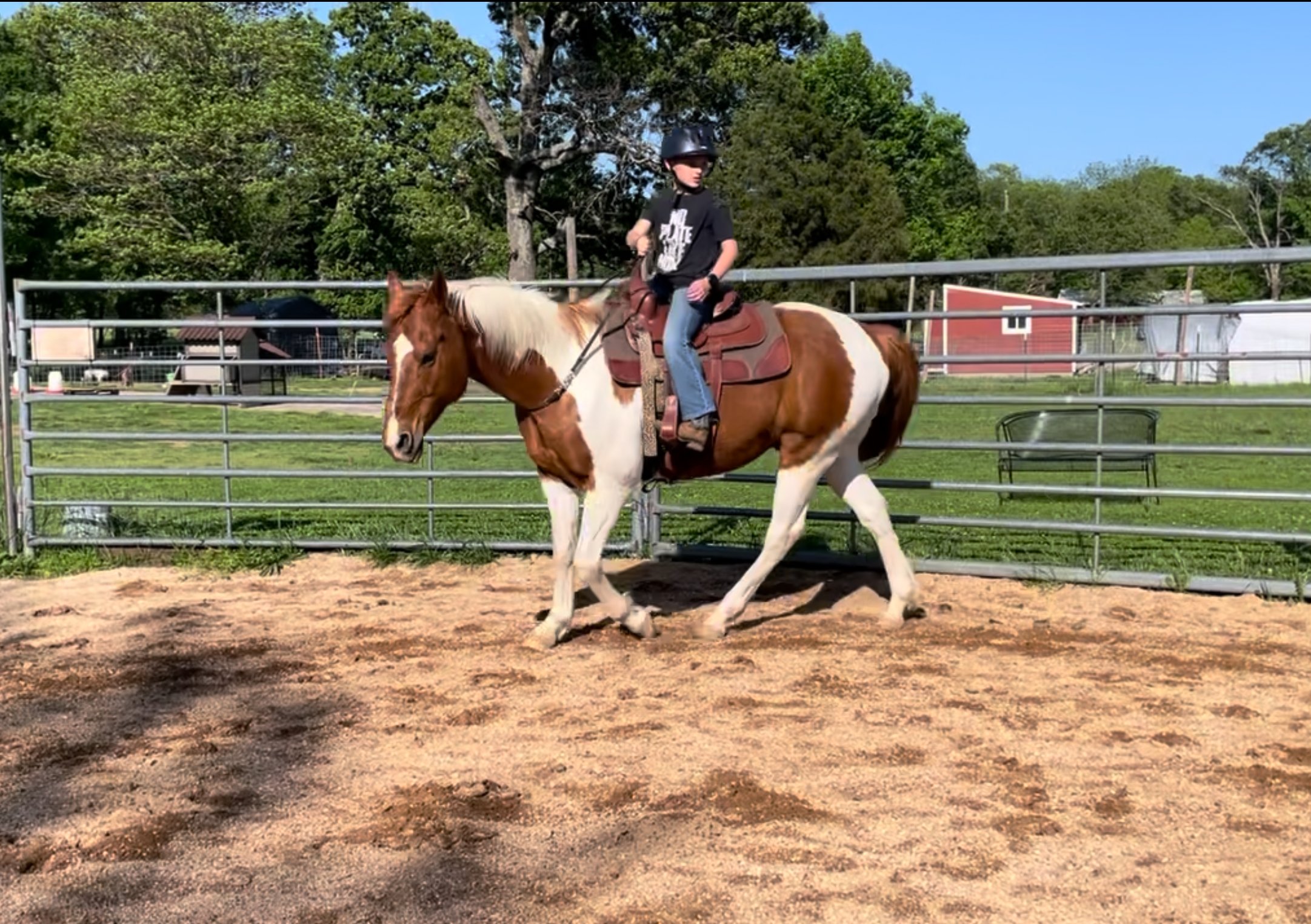Borderless - There are NO Limits!
“Being able to perceive visceral sensations is the very foundation of emotional awareness” - “The Body Keeps the Score” by Bessel van der Kolk
With all the chatter lately about horseback riding and horsemanship lessons being approved through the Arkansas Education Freedom Account (EFA) program — including being contacted by the Arkansas Times, no less! — I thought, Who better to address the topic than one of the approved vendors themselves?
First, if you’re not familiar with the Arkansas EFA program, I encourage you to visit the Arkansas LEARNS website to learn more. As an approved vendor, I want to be clear that I have no control over the politics or decision-making behind the Arkansas EFA Program. My focus has always been, and will always be, on serving my community and providing more families with access to the benefits of equine-assisted learning. It’s important to know that the conversations I had with the writer were much broader and more nuanced than what was ultimately shared. My decision to become a vendor was not about politics but about passion — making this unique educational experience available to more children who could benefit from it.
While I respect differing opinions about the program, my goal is to keep my platform focused on what truly matters: building connections, fostering learning, and creating opportunities for growth through horsemanship.
Why Horsemanship??
If you haven’t had the chance to explore it yet, there are plenty of easily accessible studies on how horse-human interactions can empower students in so many meaningful ways! Some links are provided here , here, here and here. While there are plenty more that were not put in this article, I encourage everyone to take full advantage of it to dive deeper into this topic!
Did you know there’s a school that offers children a tuition-free education while incorporating equine-assisted studies into their curriculum? Take a look at AAEC to see the incredible work they’re doing to advance education and agriculture in their community!
There are a lot of articles that hint at the reason why horseback riding lessons, equine assisted therapies, and other programs are beneficial, no matter the age or demographic. But it can be hard to figure out what is true and what’s “just words” - below I will highlight a few of the many benefits students stand to gain incorporating equine assisted learning activities into their homeschool curriculum, extra curricular activities, or favorite past time.
Mindfulness at a Young Age
As children, it's often challenging to recognize how our internal feelings affect us and others around us. When we ask "What's the function?" of a behavior, it generally falls into four categories, but it can be hard to self reflect and identify it on the fly (especially for children!) Horses, as prey animals, are experts at reading real-time situations, which helps them survive in the wild. Their heightened awareness to changing circumstances allows them to react quickly, as we see with a "scary" plastic bag.
After the initial reaction, however, they often calm down when they realize there's no real threat. If we can't read those shifts and co-regulate with our horse, we miss an important aspect of horsemanship that teaches us to stay present and responsive to changing situations.
Learn more about how mindfulness in general can bring many health benefits - Yoga, or most other mindfulness activities can be hard, complex or even “boring” to children. Horses offer an unconventional opportunity to learn how to be in the moment every time. For some people, “engaging with horses or dogs may be much safer than dealing with human beings.”
Sense of Community
When we are embraced into a community, there is usually something to rally around. Whether it be a love for a favorite author, or a shared interest in all things horses, cultivating community has been proven to decrease the development of PTSD after a traumatic event has occurred (remember, what you find traumatizing may not be what your neighbor does!) - Curious about the studies, check them out here, and here.
Horses also have the ability to satisfy that need for community, when it feels tough to connect with your fellow humans. I’m no stranger to the saying “I’m not a hugger” - and to this day I am not! But that does not stop me from getting my hugs in from my furry friends! Research has shown that horses have a pretty similar brain functions with humans, and some of those functions includes social engagement and emotional processing.
While most horses social engagement capabilities do not mimic humans, we do share key neural mechanisms that allow for deep emotional interaction. These parts of the brain in which we share similarity are the Prefrontal Cortex, Amygdala, and the Insular Cortex (which is not visible from the outer surface of the brain!)
Increased Body Awareness Leads to Improved Cognitive Functioning
As we get older, we rely less on our emotional sides of our brain to evaluate a circumstance, and embrace more of the logical circumstances….or so we think. Most of the time, it can be hard to see between the blurred lines of truth through perception and the true reality of situations.
Interacting with horses requires real-time body awareness, as prey animals like horses are sensitive to human emotions and body language. Emotional unawareness can distort reality, affect hormones, and potentially lead to brain changes due to stress or trauma.
Horses communicate through a language based on our five senses—touch, smell, sight, hearing, taste—and our body’s reactions deeply impact them. By learning to cooperate with these animals, who typically would benefit from avoiding engagement, we can improve cognitive functions such as memory, attention, and executive function. (which we are seeing a decline in, see studies here, and here.
“The neuroscientist Joseph LeDoux and his colleagues have shown that the only way we can consciously access the emotional brain is through self-awareness, i.e. by activating the medial prefrontal cortex, the part of the brain that notices what is going on inside of us and thus allows is to feel what we’re feeling. Most of our conscious brain is dedicated to focusing on the outside world: getting along with others and making plans for the future. However, that does not help us manage ourselves. Neuroscience research shows that the only way we can change the way we feel is by becoming aware of our inner experience and learning to befriend what is going on inside ourselves.”
Broadening Horizons and Serving MY Community
I want to address something mentioned in the article — my comment that this program seemed “too good to be true.” That sentiment was rooted in my excitement over the idea that parents could incorporate equine-assisted activities into their homeschool curriculum.
Whether it’s assisted learning, horsemanship, or therapeutic riding, I know firsthand how impactful this kind of education can be. My own time with horses, which became an integral part of my homeschooling program put together by my parents, helped shape my passion for this work! That foundation inspired me to build a business around sharing the knowledge and skills I cultivated.
As a POC (Person of Color), I also understand the value of making opportunities like this more accessible. Horsemanship mentoring isn’t just about riding horses; it’s about fostering life skills, confidence, and a deep connection to the most ancient parts of ourselves. (The part that allows us to exist more primitively through non-verbal communication, the part that allows us to feel and absorb the world around us.) Through this program, I can help more families experience those benefits in a meaningful way.
For months now, I’ve been saying, “Borderless has a lot of things being worked on under the hood,” and one of those things is to create a sustainable sliding scale option for my community. I believe everyone should have the chance to experience the life long benefits of horsemanship, regardless of their financial situation. My slogan, “There are NO limits,” means just that — and that includes making my Horsemanship instruction accessible to families at different price points. While I’m still working out the details, please don’t let the price hold you back.
If you think your child would benefit from Borderless Horsemanship — homeschooler or not — reach out to me. Let’s talk and see what we can figure out together. I’m passionate about making this experience available to every child who wants it, and I’ll do my best to find a way to make it happen for your family.
For many homeschoolers, customized curriculum options are essential to a well-rounded education. I’m grateful for the chance to offer my services as a part of that journey and to open the doors to a world that has meant so much to me. By combining my love for horses with my dedication to my community, I hope to help create experiences that are enriching, inclusive, and transformative for kids across Arkansas.
Sincerely,
Sabrina D.
Borderless Horsemanship
“There are NO Limits”






